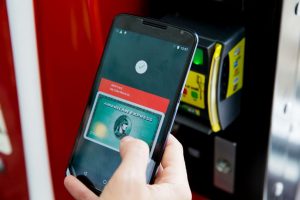
Android Pay
Mobile payments are making its way up now that payment modes such as Android Pay exist. However, despite the rising popularity of Android Pay, which is now available on smartwatches as well, many users are thinking twice about whether to go give it a try and if it is really worth or not. One of the main concerns is its security.
If you are one of those people who are in doubt of this new trend, you are not alone. In fact, a study concluded that only 52% of Americans had tried mobile payments, but only 18% use the method regularly.
Here are some of the reasons why;
Security Flaws in The Payment Technology
Hackers can get into anything that connects to the Internet – and that includes Android Pay. With security vulnerabilities routinely exploited on gadgets, Google is not able to squash every vulnerability that pops up on Android Pay. This means at some point hackers might find a window that can steal all your vital payment information.
There are some basic routine things you can do about these threats, however. Keep a check on your passwords. Keep changing them frequently so that even if hackers get your information, it will not be accurate for very long. Two-factor authentication is also always a welcome move along with shopping on websites that are deemed safe.
Beware Of Phishing Scams!
Scams are constantly spread across the Internet, which attempts to steal your information via e-mails, text messages, and other methods of communication.
Given that Android Pay can be used for apps and online payments as well, it is not impossible or hard to think that there could be some apps that might end up putting your data or personal information at risk. There could also be possible security violations when dealing with banks and credit card companies.
No Biometric Security – Yet
Android Pay still has no biometric security that can also be put on its list of disadvantages, unlike Apple Pay. Biometrics adds the necessary layer of security for authenticating your payments, and it also ensures that no one else can use your device to pay other than yourself.
Availability of Payment Terminals & Partner Banks
You cannot rely on Android Pay completely and step out of your home without carrying a credit or debit card.
And as we all know, not every bank is associated with Android Pay, which could result in a major setback and hassle when processing payments as your preferred bank might not even be on the list.
When Your Device Decides To Shut Down
Gadgets are high on RAM and other specs, meaning it drains the battery faster. This is not only applicable to Android Pay, but it also applies to all mobile wallets as they rely on the device completely. If ever the device runs out of battery, the user can’t really do anything about it.
No Signal
Your device needs to be connected to a network to process any payment transactions on Android Pay but there are times when you will face signal disturbances, which means your payment could just suddenly pause in the middle if your device loses its signal.
Android Pay is definitely one of the many things that we should look forward in term of changing the digital payments processes. However, there are still lacking keys that Google needs to focus into to make using Android Pay secure and convenient.
